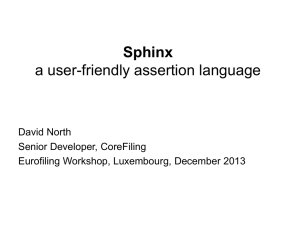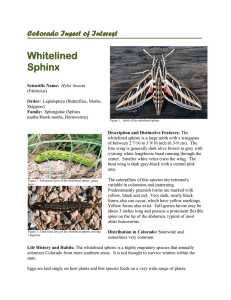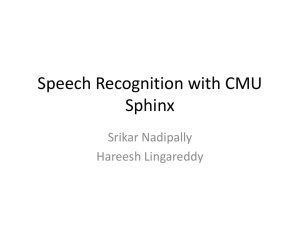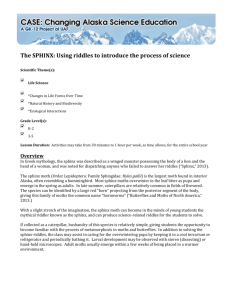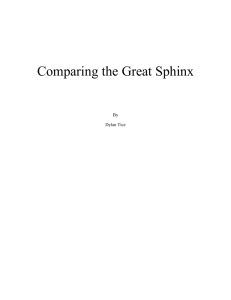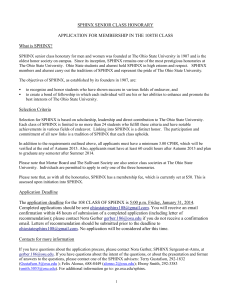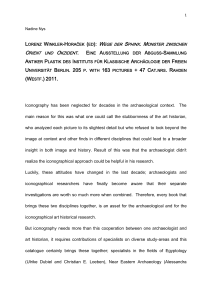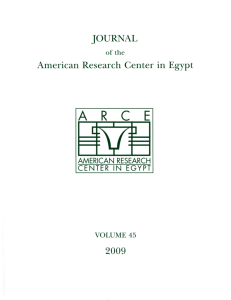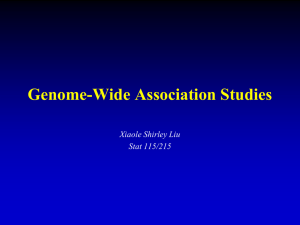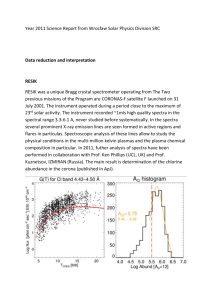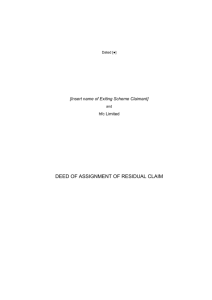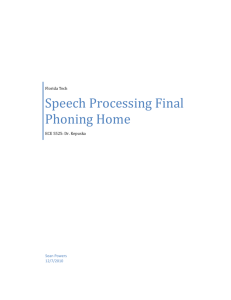file - BioMed Central
advertisement
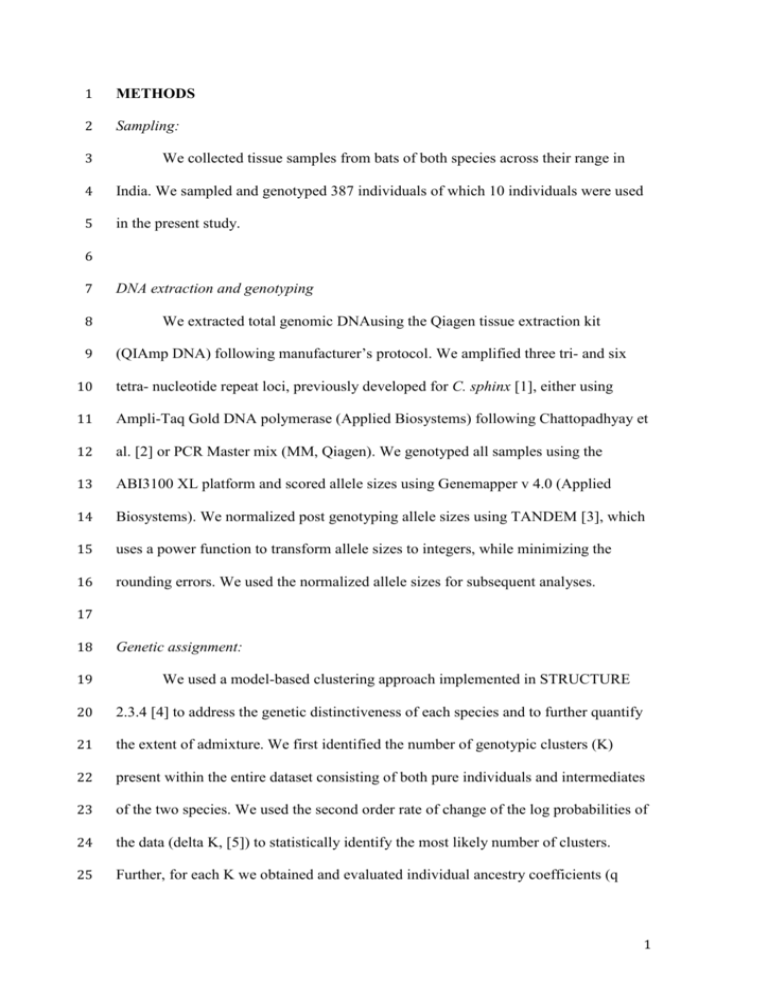
1 METHODS 2 Sampling: 3 We collected tissue samples from bats of both species across their range in 4 India. We sampled and genotyped 387 individuals of which 10 individuals were used 5 in the present study. 6 7 8 9 DNA extraction and genotyping We extracted total genomic DNAusing the Qiagen tissue extraction kit (QIAmp DNA) following manufacturer’s protocol. We amplified three tri- and six 10 tetra- nucleotide repeat loci, previously developed for C. sphinx [1], either using 11 Ampli-Taq Gold DNA polymerase (Applied Biosystems) following Chattopadhyay et 12 al. [2] or PCR Master mix (MM, Qiagen). We genotyped all samples using the 13 ABI3100 XL platform and scored allele sizes using Genemapper v 4.0 (Applied 14 Biosystems). We normalized post genotyping allele sizes using TANDEM [3], which 15 uses a power function to transform allele sizes to integers, while minimizing the 16 rounding errors. We used the normalized allele sizes for subsequent analyses. 17 18 19 Genetic assignment: We used a model-based clustering approach implemented in STRUCTURE 20 2.3.4 [4] to address the genetic distinctiveness of each species and to further quantify 21 the extent of admixture. We first identified the number of genotypic clusters (K) 22 present within the entire dataset consisting of both pure individuals and intermediates 23 of the two species. We used the second order rate of change of the log probabilities of 24 the data (delta K, [5]) to statistically identify the most likely number of clusters. 25 Further, for each K we obtained and evaluated individual ancestry coefficients (q 1 26 values) to assign individuals into population clusters. Based on available literature we 27 considered individuals with q values > 0.9 and <0.1 as purebreds and others as 28 possible intermediates. 29 30 31 Samples used: We prepared RAD-seq library for 10 samples, which includes purebred of two 32 species of fruit bats and possible intermediates based on microsatellite based genetic 33 assignment. Details of the samples are given table S1. 34 35 36 RAD-seq library preparation: We followed Etter et al. [6] for RAD library preparation. We used high 37 fidelity eight base pair cutter (SbfI) for restriction digestion. We used six base pair 38 barcode to differentiate between individuals. The barcodes differ by at least two bases 39 (Table S1). We used 200ng of DNA per sample and 75 nM of P1 adapters for library 40 preparation. We carried out eight 30 s on-and-off sonication cycles. We performed 14 41 cycles for the final PCR amplification. To test the integrity of the library, 4 l of the 42 final library was cloned using zero blunt end cloning kit (Invitrogen). We sequence 35 43 positive clones and could obtain nine out of ten barcodes. We performed blastn for the 44 cloned products and observed that majority of the clones contained Chitopteran 45 fragment with intact restriction site, barcodes and sequencing primers. We further 46 performed a quality check using Agilant bioanalyser and observed that our library was 47 of very low template concentration (mean product size 429bp and 2nM). The library 48 was sequenced on an Illumina HiSeq 1000 platform at cCAMP (Bangalore, India). 49 50 2 51 REFERENCES 52 53 1. 54 the fruit bat genus Cynopterus (Chiroptera: Pteropodidae). Molecular Ecology 55 2000, 9:2198-2201. Storz JF: Variation at tri-and tetranucleotide repeat microsatellite loci in 56 57 2. 58 Molecular genetic perspective of group-living in a polygynous fruit bat, 59 Cynopterus sphinx. Mammalian Biology 2011, 76:290-294. Chattopadhyay B, Garg KM, Doss PS, Ramakrishnan U, Kandula S: 60 61 3. 62 binning into genetics and genomics workflows. Bioinformatics 2009, 25:1982 63 1983. Matschiner M, Salzburger W: TANDEM: integrating automated allele 64 65 4. 66 using multilocus genotype data. Genetics 2000, 155:945-959. Pritchard JK, Stephens M, Donnelly P: Inference of population structure 67 68 5. 69 individuals using the software STRUCTURE: a simulation study. Molecular 70 Ecology 2005, 14:2611-2620. Evanno G, Regnaut S, Goudet J: Detecting the number of clusters of 71 72 6. 73 discovery and genotyping for evolutionary genetics using RAD sequencing. In 74 Molecular methods for evolutionary genetics. Springer; 2011: 157-178. Etter PD, Bassham S, Hohenlohe PA, Johnson EA, Cresko WA: SNP 3 75 76 7. 77 Maller J, Sklar P, De Bakker PIW, Daly MJ: PLINK: a tool set for whole-genome 78 association and population-based linkage analyses. The American Journal of 79 Human Genetics 2007, 81(3):559-575. Purcell S, Neale B, Todd-Brown K, Thomas L, Ferreira MAR, Bender D, 80 81 82 83 84 85 86 87 88 89 90 91 92 93 4 94 TABLES 95 Microsatelli Number Barcode te based Sample Species ID of reads for RAD- Location ancestry Seq coefficient VSP14 C. sphinx Vishakapatanam 0.78 ACACCT 367,820 CA002 C. sphinx Agartala 0.15 ACAGGA 371,492 CST3 C. sphinx Tirunelveli 0.99 ACCAGT 455,699 CSL05 C. sphinx Lonawala 0.99 ACGCTA 433,887 CSY33 C. sphinx Yercaud 0.99 AGACTG 439,632 CBKM47 C. sphinx KMTR 0.99 AGCATA 419,609 CBY03 C. sphinx Yercaud 0.99 AGCTCC 366.39 CBN03 C. brachyotis Nilgiris 0.004 ACTACC 543,643 CBTS8 C. brachyotis Topslip 0.004 ACTGAT 556,814 CSY28 C. brachyotis Yercaud 0.006 AGATAT 731,138 96 97 Table S1: Details of samples used for RAD-Seq library preparation. 98 5 99 At 50% missing data Sample For M3n5 dataset Default M2n2 M3n5 M3n7 M3n5N7 10% 30% 70% 90% missing missing missing missing VSP14 113 187 197 203 202 19 103 362 838 CA002 91 189 194 197 198 19 101 394 995 CST3 133 236 241 246 246 19 123 534 1380 CSL05 122 201 214 214 205 19 109 463 1221 CSY33 132 224 237 240 240 17 118 475 1263 CBKM47 126 198 207 210 207 18 110 431 1094 CBY03 119 192 197 201 197 19 109 394 826 CBN03 440 670 676 673 677 210 227 1007 1691 CBTS8 466 694 707 708 716 212 231 1023 1723 CSY28 557 862 875 872 883 215 233 1593 2954 100 101 Table S2: Number of locus per samples for each data set 102 103 6 Number of Number of Stack depth (m) mismatch Mismatches between loci for secondary across reads (N) mismatch Number of within a locus SNPs (M) individuals (n) 10 2 0 4 761 10 2 2 4 1144 10 3 5 5 1169 10 3 7 5 1172 10 3 5 7 1183 104 105 Table S3: Number of SNPs obtained in stacks by varying different parameters in 106 denovomap.pl program in STACKS. 107 108 109 110 111 112 7 % of missing data Mean level of missing Number of SNPs data (in %) 10% 66.36 228 30% 55.37 328 50% 67.96 1169 70% 72.71 2446 90% 73.58 5294 113 114 Table S4: Number of SNPs obtained in stacks by varying the level of missing data. 115 The average level of missing data was calculated in PLINK 1.07 [7] (url: 116 http://pngu.mgh.harvard.edu/purcell/plink/). 117 8
